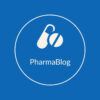Understanding Swab Sampling in Pharmaceuticals – Purpose, Process, and Importance
🔹 What Is Swab Sampling?
Swab sampling is a technique used to collect residues or contaminants from surfaces, equipment, or production areas using a small absorbent material (usually cotton, polyester, or synthetic swabs).
After collection, the swab is sent for chemical or microbiological analysis to detect traces of active ingredients, cleaning agents, or microorganisms.
Simply put, it helps confirm how clean is “clean enough” in a pharmaceutical environment.
🔍 Purpose of Swab Sampling
Swab sampling serves multiple functions within a pharmaceutical Quality Management System (QMS).
Here are the major reasons why it’s performed 👇
1️⃣ Cleaning Validation
One of the most critical applications of swab sampling is cleaning validation.
It helps verify that cleaning procedures effectively remove:
- Product residues
- Cleaning agents
- Microbial contaminants
By confirming that no significant residues remain on equipment surfaces, swab sampling ensures that the next batch produced will be free from cross-contamination.
👉 Regulatory Basis:
- FDA 21 CFR Part 211.67(b) – Equipment must be cleaned and maintained to prevent contamination.
- EU GMP Chapter 5 – Cleaning validation is essential for shared equipment.
2️⃣ Hygiene and Safety Assurance
Swab sampling also plays a key role in ensuring that the manufacturing environment maintains high hygiene standards.
It helps detect microbial contamination on product contact and non-contact surfaces, ensuring:
✔️ Safe manufacturing conditions
✔️ Protection of patient health
✔️ Compliance with GMP and EHS (Environment, Health & Safety) standards
3️⃣ Contamination Control
Cross-contamination can occur when traces of one product carry over to another.
Swab sampling identifies and quantifies such residues, helping quality teams:
- Evaluate potential contamination risks
- Take timely corrective and preventive actions (CAPA)
- Maintain equipment and facility integrity
💡 Effective contamination control protects both product quality and company reputation.
4️⃣ Environmental Monitoring
In addition to equipment surfaces, swab sampling is used in environmental monitoring programs.
It ensures that cleanrooms, workbenches, and production areas are free from unwanted residues or microbial growth.
Regular monitoring supports:
- Continuous cleanliness verification
- Compliance with ISO 14644 and GMP Annex 1 standards
- Early detection of contamination trends
🧫 Types of Swab Sampling
Depending on what is being monitored, swab sampling can be categorized as:
- Chemical Swab Sampling: Checks for residues of APIs, excipients, or detergents using analytical techniques like HPLC or TOC.
- Microbiological Swab Sampling: Detects viable microorganisms using culture media and incubation methods.
⚙️ How Swab Sampling Works (Step-by-Step Overview)
- Select the Sampling Area: Identify equipment parts or surface areas most likely to retain residues (“worst-case” locations).
- Use a Sterile Swab: Moistened with suitable solvent (e.g., water, alcohol, or buffer).
- Collect Sample: Wipe the defined area using a consistent pattern (horizontal, vertical, diagonal strokes).
- Transfer Sample: Place the swab into a labeled test tube or vial containing solvent.
- Send for Analysis: Test for specific residues or microorganisms as per validated analytical method.
- Evaluate Results: Compare with established acceptance criteria (e.g., residue limit per cm²).
📈 Acceptance Criteria Example
The acceptance limit for swab samples is usually expressed as:
Residue Limit = Maximum Allowable Carryover (MACO) / Surface Area Tested
Where MACO is based on product potency, toxicity, and daily dose considerations.
✅ Summary: Why Swab Sampling Matters
| Purpose | Description |
|---|---|
| Cleaning Validation | Confirms removal of previous product residues |
| Hygiene Monitoring | Ensures surfaces are microbiologically clean |
| Contamination Control | Detects potential cross-contamination |
| Environmental Monitoring | Tracks facility cleanliness and controls risks |
Swab sampling is a cornerstone of GMP compliance, ensuring that every product is made in a clean, controlled, and contamination-free environment.
